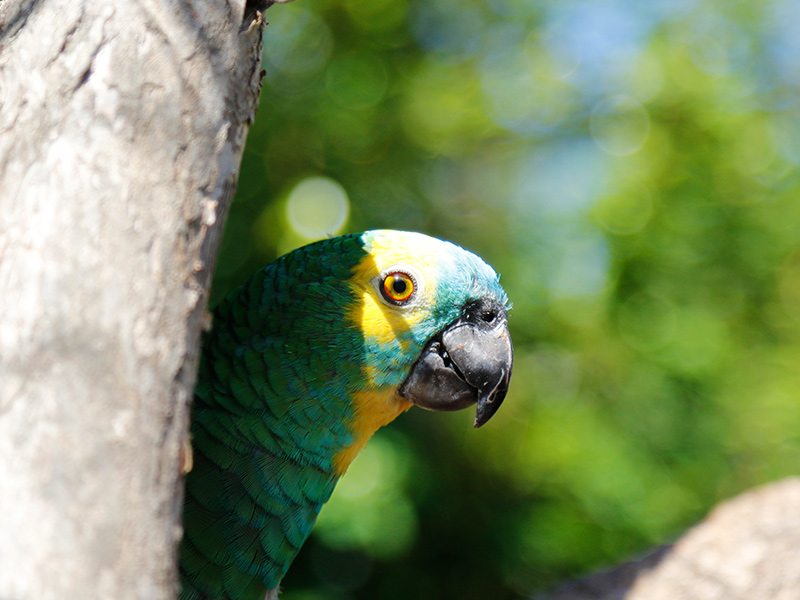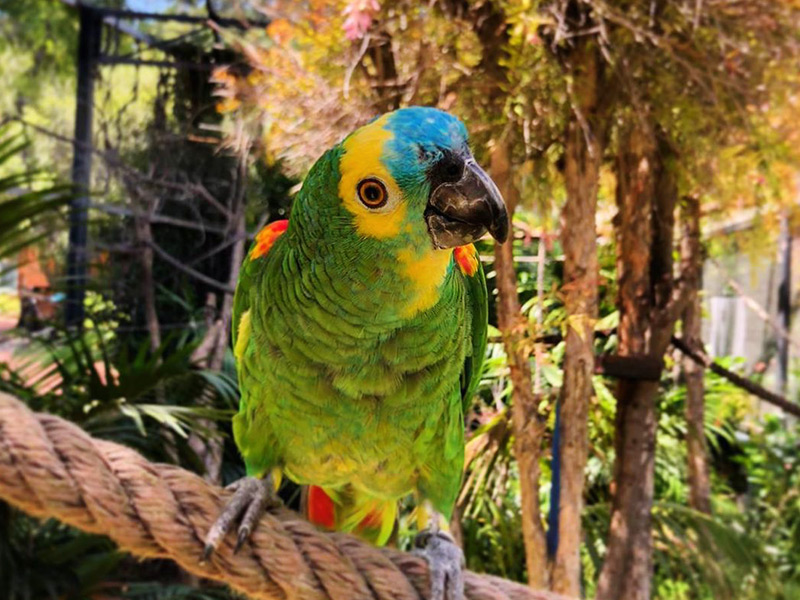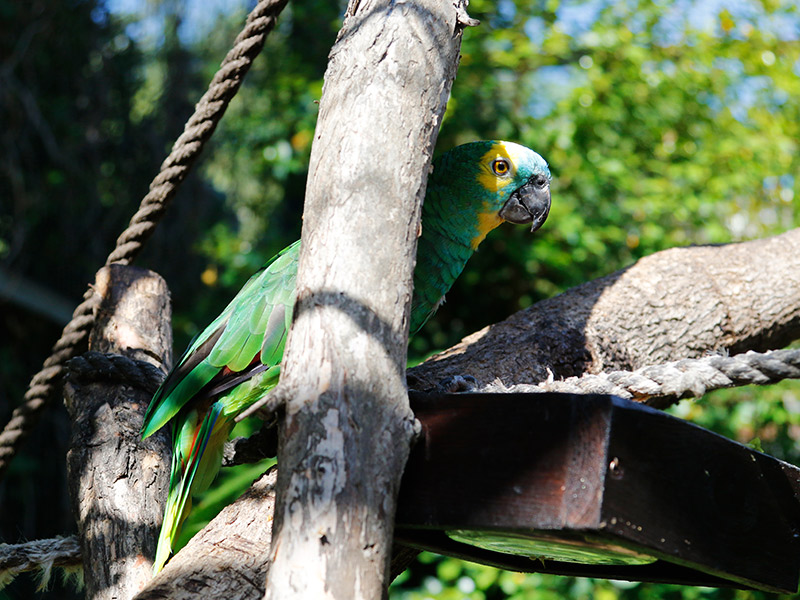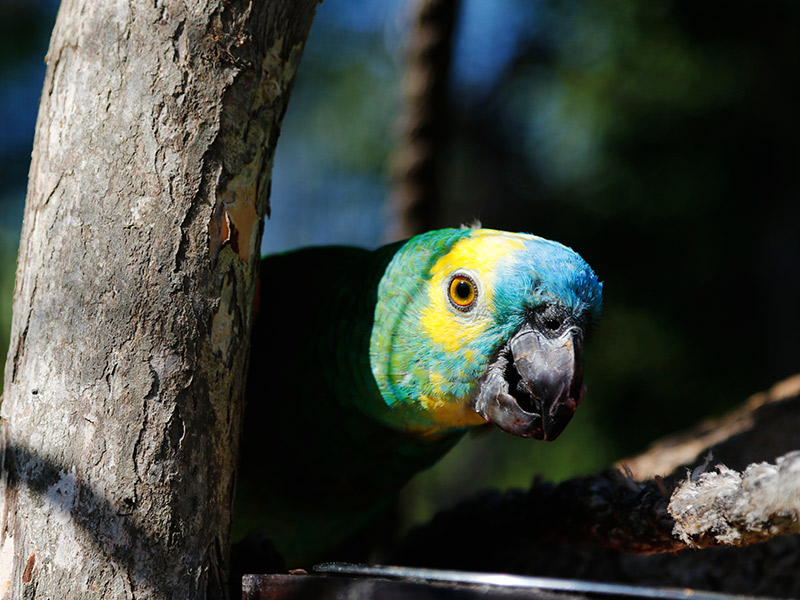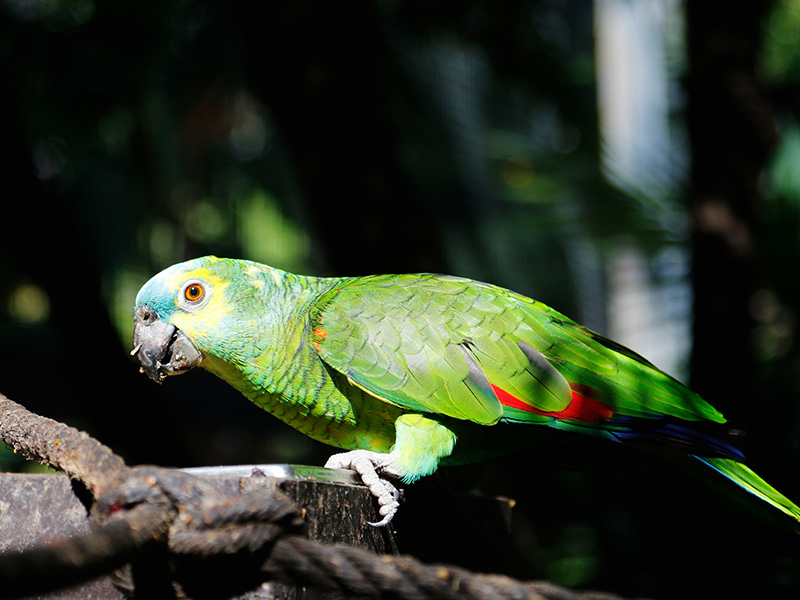Characterised by its bluish colouration on the forehead and bridle (feathers that look like thick hairs in the mouth and over the eyes) and yellow on the throat, cheeks and crown (the top of the head), this species has yellow or red wing edges. Although there is no physical difference between the two sexes, young birds are distinguished by a different colouring, paler than in adulthood. In addition, the pupils of their eyes are dark grey until around one year of age, until they reach the orange colour of adults.
During the night, large flocks take refuge and shelter in dense areas of the forest, which they abandon when they leave during the day in search of food, mainly seeds, tree fruits, cactus or palm trees, although they adapt to any type of food they find. At this time, they also usually fly in groups, in which the already formed pairs remain together. The females lay three or four eggs in holes in trees, preferably high up. The chicks are born blind and featherless and take about two months to leave the nest.
Although it has a large distribution area and large populations throughout Brazil, Paraguay, Bolivia and northern Argentina, this species is captured for the pet trade. In addition, there is a decline in the size and quality of ecosystems, with its habitat being replaced by agricultural fields in many areas.
